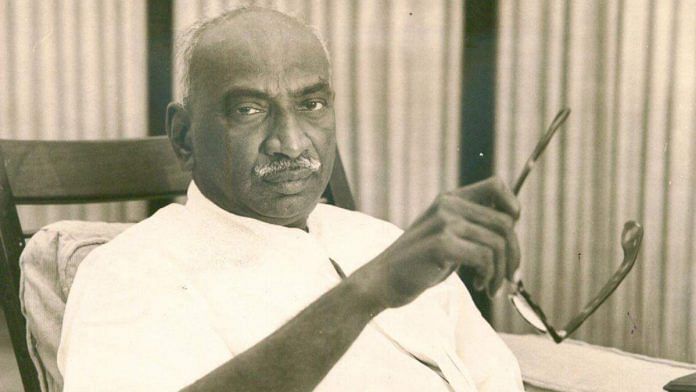‘Kingmaker’ Kamaraj was instrumental in making Lal Bahadur Shastri Prime Minister after Nehru’s death in 1964 and then Indira Gandhi in 1966.
New Delhi: South Indian politics, especially Tamil Nadu politics, has mostly been about leaders with mass following. Players such as M.G. Ramachandran, J. Jayalalithaa and M. Karunanidhi — all emerging from Tamil cinema — were charismatic leaders who had strong political influence in the state.
But, much before this trio, Tamil Nadu had ‘kingmaker’ Kumaraswami Kamaraj, the man who was responsible for anointing Lal Bahadur Shastri Prime Minister of India after the death of India’s first PM Jawaharlal Nehru in 1964 and then Nehru’s daughter Indira Gandhi in 1966.
When he installed Shastri as PM, dashing the hopes of Morarji Desai, every senior Congress leader wanted Kamaraj to accept the post himself.
His reason for refusal: He knew neither English nor Hindi and understood that India’s prime minister had to be proficient in at least one of these languages.
But, while he chose not to accept the top post for himself, it didn’t mean he was ready to let go of the reins, always inclined to play the real power behind the throne.
That he succeeded with Shastri but failed miserably when he tried to control Indira also speaks volumes about Indira’s own political savvy and her ability to outmanoeuvre her opponents — both within and outside the Congress.
Also read: Karnataka affirms Amit Shah as the most powerful Indian party chief in half-a-century
The wily politician
Born in a poor family, Kamaraj lost his father very early in life and started working when he was only 11 years old to supplement the family’s income. But, he continued to gather knowledge, mostly through newspapers.
After a stellar role in the freedom movement, Kamaraj, who first become a member of the provincial assembly in 1937, became chief minister of undivided Madras in 1954.
In between, he remained a member of the Constituent Assembly, which had been given the task of drafting our Constitution.
A staunch believer in the adage — ‘keep your friends close but your enemies closer’ – Kamaraj insisted that two of his main opponents be made ministers in his cabinet. This, many say, was his way of ensuring that he could keep a close watch on their antics and check their activities.
As chief minister from 1954 to 1963, he was instrumental in improving the educational infrastructure in the state. He was the first chief minister to launch a scheme similar to the mid-day meal programme so as to bring young children to schools.
Such was his power that in January 1966, then US Vice-President Hubert Humphrey, referred to Kamaraj as “one of the greatest political leaders in all the countries of the free world”.
He also remained president of the party for two terms.
But, it was his grand plan — better known as the Kamaraj Plan — to get senior leaders of the Congress to resign their ministerial posts to work to rebuild the party that made him a household name beyond south India.
Also read: CN Annadurai: The southern separatist-turned-nationalist
What is Kamaraj Plan?
After India’s humiliating defeat in the 1962 war with China, the stock of the Congress in general and Jawaharlal Nehru in particular fell in the eyes of the voting public. The party, Kamaraj felt, needed a booster shot.
Part of this plan was to bring in new faces as ministers and chief ministers while getting the old and established guard to leave their posts and return to work for the party.
Another theory, widely accepted, was that this was Kamaraj’s (and Nehru’s) plan to weed out the old guard, leaders such as Morarji Desai, Lal Bahadur Shastri, Jagjivan Ram, Biju Patnaik and S.K. Patil, many of who could stand in the way of Indira’s eventual elevation as PM.
The plan succeeded. When Nehru passed away, Shastri was elected, mainly because Kamaraj backed him against Desai. And, when Shastri died suddenly, Indira became PM because Kamaraj brought the old guard around. The loser was once again Desai.
However, unlike Shastri, Indira proved to be smarter, soon cutting Kamaraj down to size.
In 1969, Kamaraj entered the Lok Sabha, where, as leader of the old guard, he tried to remove Indira. In the ensuing battle, Indira outwitted the old guard, the Congress split, with Kamaraj and a handful of his old associates taking over Indian National Congress (Organisation).
However, he couldn’t recover from his loss against Indira and eventually passed away on 2 October, 1975.



